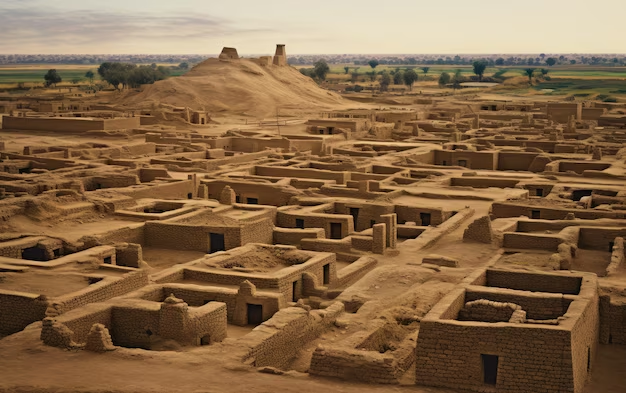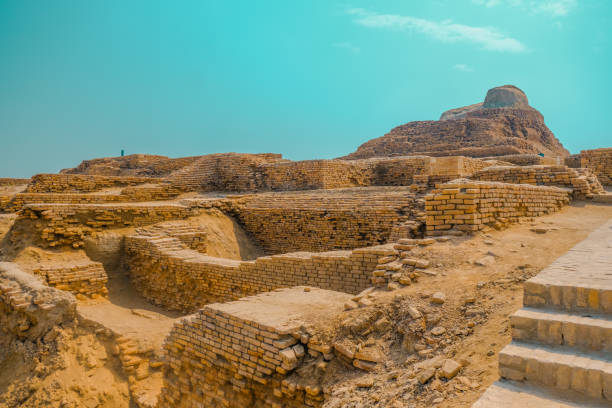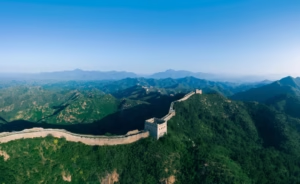The Harappan Civilization: Legacy and City Planning….

The Harappan Civilization, also called the Indus Valley Civilization, was one of the oldest civilizations in the world. It started around 2600 BCE and lasted until about 1900 BCE. This civilization grew along the Indus River and its nearby areas. The main cities were Harappa and Mohenjo-daro, but many other towns and villages were part of this large civilization.
Where It Was Located
The Harappan Civilization was found in what is now Pakistan and northwestern India. Most of the cities were located along the Indus River, which gave water for farming and daily life. Other important rivers included the Ravi, Beas, and Ghaggar-Hakra. These rivers helped the people live, grow crops, and travel.
Main Cities
The two most famous cities were:
- Harappa – It was the first city discovered, which is why the civilization is named after it.
- Mohenjo-daro – This means “Mound of the Dead” in the local language. It was very well planned.
Other important sites include:
- Dholavira
- Lothal
- Kalibangan
- Rakhigarhi
- Banawali
City Planning
Harappan cities were very well planned. Streets were straight and crossed each other at right angles. The cities had a grid pattern, just like modern cities. There were separate areas for houses, markets, and public buildings.\
\
- Houses were made of baked bricks.
- Most homes had bathrooms, toilets, and drainage systems.
- Cities had a great bath (like a swimming pool) for bathing and religious use.
- They also had granaries (storage for grain) and workshops.
This shows that they were very advanced in town planning and cleanliness.

Farming (Agriculture)
Farming was a big part of Harappan life. The people grew many types of crops using river water.
Main crops included:
- Wheat
- Barley
- Millet
- Sesame
- Mustard
- Cotton – The Harappans were among the first people in the world to grow cotton.
They used simple tools like plows pulled by animals. Fields were likely plowed before the rainy season to prepare the soil. Irrigation may have been used near rivers or canals.
Animal Husbandry
Animal husbandry means raising animals for food, milk, and work. Harappans kept many animals:
- Cows
- Buffaloes
- Dogs
- Camels
- Humped bulls (zebu) – These are often seen in Harappan seals.
They also domesticated elephants and possibly used them for work or travel. People also used horses in later Harappan times.
Many bones of animals have been found in the ruins, showing that they ate meat, milk, and used animals for labor.
https://sypertimes.com/the-egyptian-pyramidswonders-of-architecture-and-history/
Trade and Economy
Harappans were great traders. They traded within the civilization and with faraway places like Mesopotamia (present-day Iraq).
Items they traded:
- Beads
- Pottery
- Jewelry
- Cloth
- Grains
- Cotton
- Metal tools
They used weights and measures, often made of stones. They did not use coins, but they bartered goods.
Ports like Lothal were important trading centers. Lothal even had a dockyard, showing they used boats for sea trade.
Writing and Language
Harappans had a writing system, but it has not yet been fully understood. The writing was done on seals and small tablets. The script had symbols or signs, but we don’t know exactly what they mean.
Because we cannot read their script, we know little about their government, rulers, or daily thoughts.
Religion and Beliefs
We don’t have clear religious texts from Harappa, but archaeologists found many clues about their beliefs.
Some religious ideas may have included:
- Mother goddess – Many small statues show a woman, thought to represent fertility and nature.
- Pipal trees and animals – They may have been holy.
- Shiva-like figure – A figure sitting in a yoga pose with animals around, found on a seal, may show early worship of Lord Shiva.
- Fire altars – Found in Kalibangan and Lothal, these may have been used for rituals.
The Harappans may have believed in nature worship, fertility, and animal symbols.
They buried their dead with pots, tools, and jewelry. This shows they may have believed in life after death.

Art and Craft
Harappans were skilled artists and craftsmen. They made:
- Beautiful pottery with painted designs
- Terracotta toys
- Stone statues
- Bronze tools and idols
- Beads and ornaments
They used copper, bronze, and stone for making tools and decorations.
One famous bronze statue is the “Dancing Girl” of Mohenjo-daro – a small figure that shows great skill.
Clothing and Ornaments
Men and women wore simple clothes, probably made of cotton. Women wore jewelry like necklaces, bangles, earrings, and headbands. Even men wore ornaments.
Hair styles and beards were carefully kept. People also used combs, mirrors, and cosmetics.
People and Society
The Harappan society seems to have been peaceful and organized.
- There is little sign of war or weapons.
- No huge palaces or temples were found, which suggests no strong kings or priests.
- People may have lived equally, with no big rich-poor gap.
They probably had skilled workers, farmers, traders, and craftsmen.
Decline of the Civilization
Around 1900 BCE, the Harappan Civilization began to decline. Many reasons are suggested:
- Changes in rivers – Rivers like the Indus may have changed course or dried up.
- Floods or droughts – These could destroy crops and homes.
- Overuse of land – Soil may have become poor from farming.
- Invasion – Some say outside groups like the Aryans came, but there is no clear proof.
- Disease or disasters – Natural disasters could have hurt the population.
Slowly, people left the big cities, and the civilization disappeared.
Legacy
Even though the Harappan Civilization ended long ago, it left a strong impact:
- Early use of cotton
- Town planning
- Sanitation systems
- Peaceful, organized living
- Art and trade skills
It is one of India’s earliest and proudest cultures. We are still learning about it through new research and discoveries.
Conclusion
The Harappan Civilization was a great ancient culture that grew near rivers, built amazing cities, farmed the land, raised animals, made art, and lived in peace. Though we still don’t know everything about them, their smart planning, clean cities, and skilled work show us how advanced they were. They are a shining example of early human progress in South Asia.




